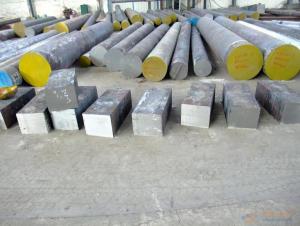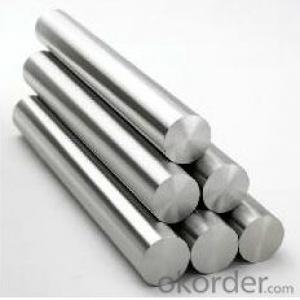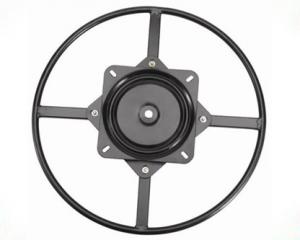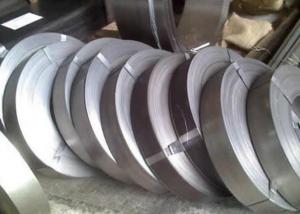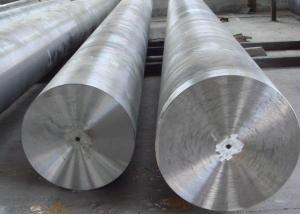30Cr JIS SCr430 DIN1.7030 ASTM 5130
- Loading Port:
- Tianjin
- Payment Terms:
- TT OR LC
- Min Order Qty:
- 25 m.t.
- Supply Capability:
- 50000 m.t./month
OKorder Service Pledge
OKorder Financial Service
You Might Also Like
Item specifice
30Cr JIS SCr430 DIN1.7030 ASTM 5130
Product Description:
1. Grade: 30Cr JIS SCr430 DIN1.7030 ASTM51300
2. Specification: Dia: 80~800mm Length:2000-13000mm or as required
3. Process: EAF+LF+VD+ Forged+ Heat Treatment (Annealed,A Normalized, Q+T)
4. Machine Capability
Tensile strength (N/mm2Mpa): >=885
Elongation %: >=11
Yield strength: >=685
Hardness: HBS less than 187
Reduction of area:>=45%
5. Inspection: 100% Ultrasonic according to the test standards:SEP1921-84,GR.3 CLASS C/C or by SGS ,AHK or Alex Stewart
6. Packing situation: standard seaworthy packing or as customer required
7. Delivery time: 45 days after order confirmed
8. Payment: T/T or L/C at sight.
Chemical Compositon:
C | Si | Mn | Cr | Ni | Cu |
Equal or less than | |||||
0.27-0.34 | 0.17-0.37 | 0.50-0.80 | 0.80-1.10 | 0.30 | 0.30 |
Application:
(1) Generally used for producing the important parts with high strength and good plastic.
(2) After nitrogen treatment, used for producing the important parts with special performance
requirements, such as shafts, gears, fasteners, bolt of large dia steamer etc.
Advantage:
1, Fast response in reply
2, Good communication sales with reasonable price.
3,Good quality materials.
4,Fast lead time.
5,Rich experience in export business.
6,Well after sales service.
Product Show:
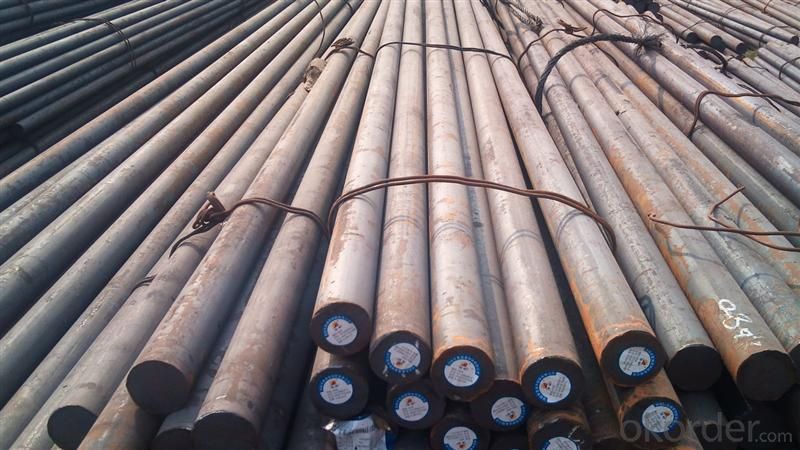
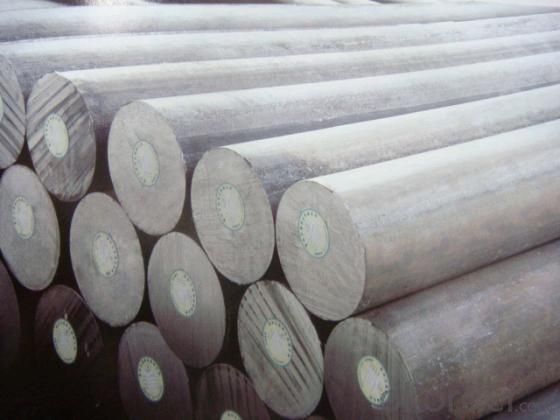
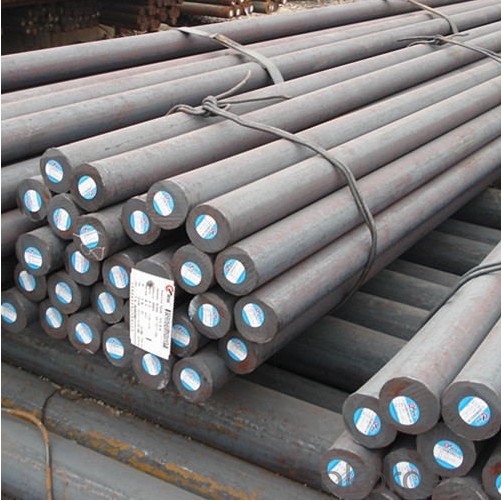
- Q:How is corrosion-resistant steel used in marine applications?
- Corrosion-resistant steel is extensively used in marine applications due to its ability to withstand the harsh environment of seawater. It is employed in the construction of various marine structures such as ships, offshore platforms, and coastal infrastructure. This type of steel provides exceptional resistance to corrosion, preventing the degradation of materials and ensuring the longevity and safety of marine structures. Additionally, corrosion-resistant steel is used in the production of marine equipment, such as propellers, valves, and pipelines, as it offers superior durability and protection against corrosion caused by saltwater exposure.
- Q:What are the different surface treatments applied to special steel?
- There are several different surface treatments that can be applied to special steel to enhance its properties and improve its performance. Some of the commonly used surface treatments include: 1. Heat treatment: This is a process that involves heating the steel to a specific temperature and then cooling it at a controlled rate. Heat treatment can be used to improve the hardness, strength, and toughness of the steel, as well as to enhance its resistance to wear and corrosion. 2. Coating: Coating the surface of special steel with a protective layer is another common surface treatment. This can be done using various methods such as electroplating, hot-dip galvanizing, or powder coating. Coatings can provide additional resistance to corrosion, improve the appearance of the steel, and increase its lifespan. 3. Nitriding: Nitriding is a process that involves diffusing nitrogen into the surface of the steel, typically at high temperatures. This forms a hard surface layer that improves the wear resistance and fatigue strength of the steel, while maintaining the core toughness. 4. Shot peening: Shot peening is a mechanical surface treatment that involves bombarding the steel surface with small spherical particles, typically made of steel or ceramic. This process induces compressive stresses in the surface layer, which improves the fatigue strength and resistance to stress corrosion cracking. 5. Passivation: Passivation is a chemical treatment that is used to remove impurities and contaminants from the surface of the steel, typically by immersing it in an acid solution. This process helps to restore the natural corrosion resistance of stainless steel by forming a protective oxide layer on the surface. 6. Electro-polishing: Electro-polishing is an electrochemical process that removes a thin layer of material from the surface of the steel. This treatment can improve the surface finish, remove micro-roughness, and enhance the corrosion resistance of the steel. These are just a few examples of the various surface treatments that can be applied to special steel. The choice of treatment depends on the specific requirements of the application and the desired properties of the steel.
- Q:What is the impact of carburizing on the properties of special steel?
- The process known as carburizing, or case hardening, is utilized to introduce carbon into the surface layer of special steel, resulting in several beneficial effects. Firstly, carburizing forms a tough outer layer, called the case, which is carbon-rich. The infusion of carbon atoms into the steel matrix during carburizing increases the carbon content on the surface, leading to a higher level of hardness compared to the core. This hardened case provides exceptional resistance against wear, abrasion, and surface fatigue, making it ideal for applications requiring high durability, such as gears, camshafts, and bearings. Moreover, carburizing enhances the strength of the steel by improving its ability to form martensite, a hard, crystalline structure. This transformation contributes further to the hardness and strength of the carburized steel, making it suitable for applications necessitating high load-bearing capacity, like shafts and axles. Furthermore, carburizing has the potential to improve the fatigue resistance of special steel. The hardened case created during the carburizing process helps distribute stress evenly across the surface, reducing the probability of crack initiation and propagation. This enhanced resistance to fatigue failure makes carburized steel appropriate for components exposed to cyclic loading, such as gears and springs. However, it is important to acknowledge that carburizing also has its drawbacks. The higher carbon content on the surface can reduce the material's ductility and toughness, making it more susceptible to brittle fracture. To address this issue, it is common practice to utilize steel with a lower carbon content for the core, ensuring a balance between hardness and toughness. In conclusion, carburizing significantly impacts the properties of special steel, enhancing hardness, wear resistance, and strength, which is advantageous for applications requiring durability, high load-bearing capacity, and fatigue resistance. Nevertheless, careful control of the process is necessary to maintain a balance between hardness and toughness, ensuring the overall performance and reliability of the material.
- Q:How does special steel contribute to the aerospace turbine industry?
- Special steel plays a crucial role in the aerospace turbine industry as it offers exceptional strength, corrosion resistance, and high-temperature stability required for the demanding operating conditions of turbine components. It enables the production of turbine blades, discs, and other critical parts that can withstand extreme temperatures and stresses, ensuring optimal performance and safety in aircraft engines. Additionally, special steel's excellent fatigue resistance and ability to retain mechanical properties at elevated temperatures contribute to enhanced fuel efficiency and durability, ultimately advancing the overall efficiency and reliability of aerospace turbines.
- Q:How does special steel compare to other materials?
- Special steel, also known as alloy steel, exhibits exceptional strength, durability, and resistance to wear and corrosion. When compared to other materials, such as regular steel, aluminum, and plastic, special steel stands out for its superior mechanical properties. Firstly, special steel offers higher tensile strength and hardness, making it ideal for applications requiring heavy-duty performance. Its resistance to deformation and ability to withstand high pressures and temperatures make it suitable for use in industries like aerospace, automotive, and construction. Moreover, special steel possesses excellent wear resistance, making it suitable for applications subject to friction, abrasion, and impact. This property minimizes the need for frequent repairs or replacements, resulting in cost savings and improved efficiency. In terms of corrosion resistance, special steel surpasses regular steel, which is prone to rusting when exposed to moisture or aggressive environments. Its composition includes elements such as chromium, nickel, and molybdenum, which form a protective layer on the surface, preventing corrosion and extending the material's lifespan. Compared to materials like aluminum and plastic, special steel has the advantage of being more robust and less prone to deformation or breakage. While aluminum is lightweight, it lacks the strength and hardness of special steel, limiting its suitability for heavy-duty applications. Plastic, on the other hand, offers lower strength and durability compared to special steel, making it less suitable for demanding tasks. Furthermore, special steel can be easily machined, fabricated, and welded, allowing for versatile applications across various industries. Its flexibility in terms of shaping and forming makes it a preferred choice in the manufacturing of components and structures. Overall, special steel outperforms other materials in terms of strength, durability, wear resistance, corrosion resistance, and versatility. Its exceptional properties make it an essential material in demanding industries where reliability and performance are paramount.
- Q:How does special steel perform under high-temperature oxidation?
- Special steel performs well under high-temperature oxidation due to its inherent resistance to corrosion and ability to form protective oxide layers, which protect the material from further oxidation. This characteristic makes it suitable for applications in high-temperature environments, such as in power plants, chemical processing facilities, and aerospace industry.
- Q:How does special steel perform in terms of machinability?
- Special steel typically has good machinability due to its composition and specific manufacturing processes. It is often designed to have improved cutting and chip formation properties, allowing for easier and more efficient machining operations. This allows manufacturers to achieve high precision and productivity when working with special steel, making it a favorable choice for various applications.
- Q:Can special steel be used in the medical device manufacturing industry?
- Yes, special steel can be used in the medical device manufacturing industry. Special steel alloys, such as stainless steel or titanium, are commonly used in medical device manufacturing due to their excellent corrosion resistance, biocompatibility, and strength characteristics. These alloys are specifically designed to meet the stringent requirements and regulations of the medical industry, making them ideal for producing safe and durable medical devices.
- Q:What are the different methods for joining special steel?
- Special steel, commonly used in applications requiring high strength, corrosion resistance, or specific mechanical properties, can be joined using various methods. Some of the most frequently employed methods include: 1. Welding: The most commonly used technique for joining special steel is welding. Different welding methods can be utilized, such as arc welding (including shielded metal arc welding, gas metal arc welding, and flux-cored arc welding), resistance welding (spot welding, seam welding), and laser welding. Welding necessitates the use of filler material to bond the steel components together, resulting in strong and durable joints. 2. Brazing: The process of joining special steel through brazing involves the use of a filler material (typically a brass or bronze alloy) with a lower melting point than the base steel. The filler material is heated until it melts and flows into the joint, creating a robust bond. Brazing is commonly employed for joining dissimilar metals or when the base steel possesses a high melting point. 3. Soldering: Similar to brazing, soldering involves the use of a filler material with a lower melting point to join special steel. However, soldering usually employs a non-ferrous filler material, such as tin-lead or tin-silver alloys. Soldering is frequently utilized for joining electronic components or fragile parts that cannot endure high temperatures. 4. Mechanical Fastening: Special steel can also be joined using mechanical fasteners, including bolts, screws, rivets, or clips. This method is often chosen when the joint needs to be easily disassembled or when welding or brazing is impractical or undesirable. 5. Adhesive Bonding: Adhesive bonding involves the use of specialized adhesive or glue to join special steel. This method is suitable when joining thin or delicate steel components or when the joint requires high resistance to vibration or shock. Adhesive bonding can create a strong and durable bond, although it may not be suitable for high-temperature or high-stress applications. When selecting the appropriate method for joining special steel, it is crucial to consider the specific requirements of the application, such as strength, corrosion resistance, temperature resistance, and desired permanence of the joint. Each method possesses its own advantages and limitations, and choosing the right approach ensures a robust and dependable joint.
- Q:What are the main applications of special steel in the power generation equipment?
- Special steel is commonly used in power generation equipment for its high strength, corrosion resistance, and thermal stability. Some key applications include turbine blades, heat exchangers, boiler tubes, and generator components. These specialized steel alloys ensure reliable performance, efficiency, and durability in demanding power generation environments.
1. Manufacturer Overview |
|
|---|---|
| Location | |
| Year Established | |
| Annual Output Value | |
| Main Markets | |
| Company Certifications | |
2. Manufacturer Certificates |
|
|---|---|
| a) Certification Name | |
| Range | |
| Reference | |
| Validity Period | |
3. Manufacturer Capability |
|
|---|---|
| a)Trade Capacity | |
| Nearest Port | |
| Export Percentage | |
| No.of Employees in Trade Department | |
| Language Spoken: | |
| b)Factory Information | |
| Factory Size: | |
| No. of Production Lines | |
| Contract Manufacturing | |
| Product Price Range | |
Send your message to us
30Cr JIS SCr430 DIN1.7030 ASTM 5130
- Loading Port:
- Tianjin
- Payment Terms:
- TT OR LC
- Min Order Qty:
- 25 m.t.
- Supply Capability:
- 50000 m.t./month
OKorder Service Pledge
OKorder Financial Service
Similar products
New products
Hot products
Related keywords























